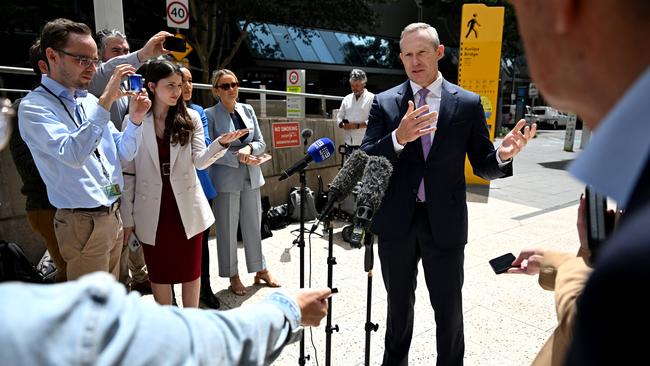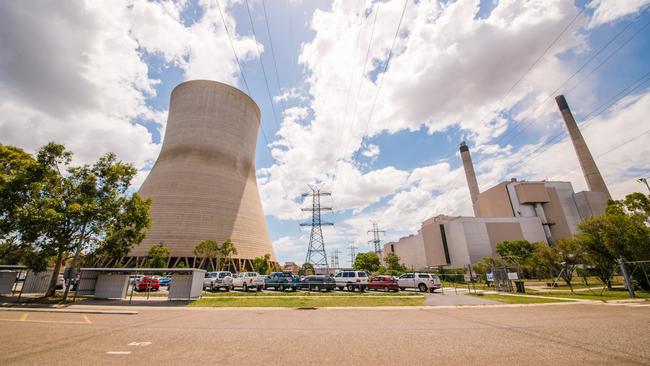Queensland energy minister Mick de Brenni denies being told of ‘catastrophic risk’ at Callide power station
Queensland Energy Minister Mick de Brenni has claimed in court he was unaware of warnings made by a safety manager, two years before an explosion at the state-run Callide power station.

Queensland’s Energy Minister Mick de Brenni has claimed he was unaware the safety manager at one of Queensland’s biggest power stations had warned the facility was “on path for catastrophic risk” two years before it exploded.
Mr de Brenni told the Federal Court on Thursday that he had not been informed of the comments of senior safety executive Lara Kayess, who quit in disgust in 2019, citing a lack of funding for her team and maintenance backlogs.
The state-run Callide C4 generator blew up in 2021, cutting power to 500,000 homes and businesses, resulting in soaring electricity prices across the national grid because of the reduced supply.
As Queensland Labor faces mounting pressure and likely defeat at the October 26 election, Mr de Brenni moved to downplay any suggestion of mismanagement by the government in the lead-up to the explosion at the Callide station.
Opposition spokeswoman Deb Frecklington had accused the government of running down the power station in a bid to extract dividends, and said Mr de Brenni had since covered-up government inaction about safety warnings ahead of the explosion.
Mr de Brenni took over the state’s energy portfolio in November 2020, after his predecessor, Anthony Lynham, retired from politics.
In an hour-long examination, Mr de Brenni told the Federal Court that former CS Energy chief executive Andrew Bills assured him after the explosion in May 2021 that no-one could have predicted it.
“Mr Bills advised me it was an unforeseeable incident,” Mr de Brenni said.

The politician was called to give evidence in the case that is examining the state government’s running of the power station about 15km northeast of Biloela in central Queensland.
Dumped CS Energy chairman Jim Soorley, a one-time Labor lord mayor in Brisbane who was hand-picked for the role by former ALP premier Annastacia Palaszczuk, will face examination on October 10.
Process safety and a lack of maintenance at the plant operated by state government-owned CS Energy, was not blamed for the explosion, Mr de Brenni told the court.
Mr Bills also told Mr de Brenni during an inspection of the cooling tower at the C3 unit after it collapsed in November 2022 that “there would be an investigation” into the cause, the court heard.
He also told the court he was not aware “many” independent contractors reported concerns that wet areas at the C3 and C4 units had not been properly inspected since at least 2014, or that there were funding constraints that impacted the maintenance of the cooling tower at Callide’s C3 unit in November 2022.
That is despite the resignation of Ms Kayess, a CS Energy senior safety executive, in March 2019, after fighting for funding for the “critical risk program” at the power station, since it had been cut.
On Thursday, the court heard more details about Ms Kayess’s exit interview in which she said “Callide was on a path of catastrophic risk”. She told CS Energy that the lack of maintenance, pushing out overhaul dates and four fires in five months were “telltale signs” a safety incident was “quite possible”.
Ms Kayess’s concerns were raised with human resources and Mr Bills was also made aware, the court heard.
But Mr de Brenni said he only found out about Ms Kayess’s concerns after reading a report that was conducted into the causes of the explosion by forensic engineer Sean Brady.
That report had been kept secret for years after the explosion, and Mr de Brenni said he read a draft version of the report in June this year.
The energy minister said CS Energy’s new board and executive leadership team, “made statements in relation to their intent to address these matters” identified in the Brady report.
“I asked that the board articulate a response to the findings of this report,” he said.
When asked if anyone had provided him with an explanation about why process safety failings came to be, Mr de Brenni responded: “The explanation is articulated in the Brady Heywood report”.
He said all funding requests for the plants had been approved through annual budgets.





